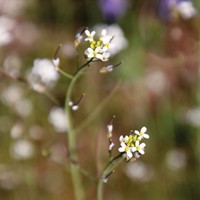Advertisement
Grab your lab coat. Let's get started
Welcome!
Welcome!
Create an account below to get 6 C&EN articles per month, receive newsletters and more - all free.
It seems this is your first time logging in online. Please enter the following information to continue.
As an ACS member you automatically get access to this site. All we need is few more details to create your reading experience.
Not you? Sign in with a different account.
Not you? Sign in with a different account.
ERROR 1
ERROR 1
ERROR 2
ERROR 2
ERROR 2
ERROR 2
ERROR 2
Password and Confirm password must match.
If you have an ACS member number, please enter it here so we can link this account to your membership. (optional)
ERROR 2
ACS values your privacy. By submitting your information, you are gaining access to C&EN and subscribing to our weekly newsletter. We use the information you provide to make your reading experience better, and we will never sell your data to third party members.
Biological Chemistry
Endophytes Are Magic Helpers For Making Natural Products
by Stephen K. Ritter
December 15, 2014
| A version of this story appeared in
Volume 92, Issue 50
Much like the elves from “Grimm’s Fairy Tales” who secretly turn up at night to make shoes for a poor cobbler in need, chemists have discovered a plant-dwelling microbial community that is a hidden producer of a natural product with potent anticancer properties (J. Nat. Prod. 2014, DOI: 10.1021/np500219a). The discovery lends growing evidence that some metabolites found in plants are actually produced by associated bacteria or fungi, rather than the plants themselves. A team led by Souvik Kusari and Michael Spiteller of the Technical University of Dortmund, in Germany, explored the root endophytic communities of shrubby Putterlickia plants of South African origin and evaluated their fermentation products using a microbiological assay and high-pressure liquid chromatography/high-resolution mass spectrometry. The researchers discovered that the microbes produce maytansine, one of the most potent cellular microtubule-targeting compounds used for treating breast cancer. They further confirmed the results via genetic studies and mass spec imaging to show that maytansine produced by the endophytes accumulates mainly in the roots of the plants. The team is now studying whether maytansine is produced by a single organism or by cross talk between two or more members of the endophyte community in order to possibly produce the drug biosynthetically.




Join the conversation
Contact the reporter
Submit a Letter to the Editor for publication
Engage with us on Twitter